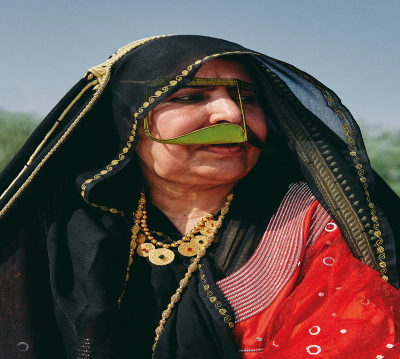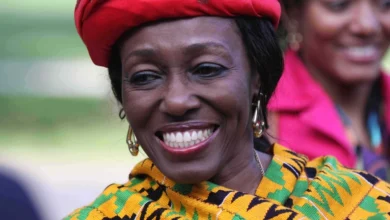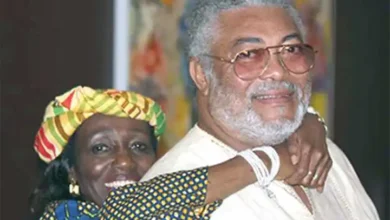
The Guardians of Emirati Craft: A Deep Historical Dive
The intricate world of traditional Emirati craft tells a story as old as the United Arab Emirates itself. From the vibrant embroideries adorning Arab dress to the delicate art of henna, these time-honored practices are more than mere decorations; they are the living embodiment of Emirati cultural heritage. As the guardians of this rich tradition, artisans in Abu Dhabi and beyond continue to breathe life into these ancient skills, preserving a legacy that has withstood the test of time.
This deep dive into the history of Emirati craft explores its origins, key traditional practices, and the crucial role of women in keeping these arts alive. It also sheds light on modern initiatives to safeguard this precious cultural asset, including efforts to have Sadu weaving recognized as UNESCO Intangible Cultural Heritage. From the intricate patterns of UAE traditional clothes to the broader landscape of Abu Dhabi heritage, this journey offers a glimpse into the soul of Emirati craftsmanship and its enduring significance in the modern world.
The Origins of Emirati Craftsmanship
The roots of Emirati craftsmanship run deep, intertwining with the rich tapestry of the region’s history. This artisanal heritage reflects a unique blend of influences, from ancient desert traditions to the sophisticated artistry of Islamic culture.
Pre-Islamic Influences
Long before the advent of Islam, the Arabian Peninsula was home to diverse communities with their own artistic traditions. These early influences laid the groundwork for what would later evolve into Emirati crafts. The mobility of people and the portability of ornamental objects played a crucial role in the development and spread of these artistic practices.
Bedouin Traditions
The Bedouin tribes, with their nomadic lifestyle, have had a profound impact on Emirati craftsmanship. Sadu weaving, a traditional form practiced by Bedouin women, exemplifies this influence. Using natural fibers such as camel hair, goat hair, and sheep wool, artisans create intricate designs that tell stories of desert life. The patterns and motifs in sadu weaving symbolize the weavers’ experiences and the harsh beauty of their environment.
Islamic Art and Design
The arrival of Islam brought a new dimension to Emirati craftsmanship. Islamic geometric patterns and arabesque designs became integral to the artistic landscape. These elements, characterized by their intricate and repetitive nature, found expression in various forms of Emirati craft. The influence of Islamic art extends to calligraphy, which has become a significant decorative element in both traditional and contemporary Emirati designs.
The interplay of these influences has resulted in a rich and diverse craft tradition that continues to evolve. As the UAE embraces modernity, efforts to preserve and elevate this cultural heritage have gained momentum, ensuring that the skills and knowledge passed down through generations remain vibrant and relevant in the contemporary world.
Key Traditional Emirati Crafts
Textile Arts: Talli and Al Sadu
Talli and Al Sadu stand out as prominent textile arts in Emirati culture. Talli, a traditional embroidery technique, involves the use of metallic threads to create intricate patterns on fabrics. Artisans employ gold or silver threads to weave luxurious designs on clothing, accessories, and household items. The patterns often feature geometric motifs inspired by the natural environment.
Al Sadu, a weaving technique with ancient roots, has been practiced for centuries by Bedouin women. This art form utilizes wool from local sheep to produce decorative textiles such as rugs, bags, and tent panels. The geometric designs in Al Sadu weaving often reflect the harsh beauty of desert life and the weavers’ experiences.
Metalwork and Jewelry
Emirati metalwork boasts a rich history, with artisans crafting a variety of objects including decorative items, tools, and weapons. Traditional metalwork often showcases intricate designs inspired by the natural environment. Jewelry making, known as Al-Sarm, holds significant cultural importance, symbolizing social status and wealth. Emirati jewelers traditionally use materials such as gold, silver, and precious stones to create ornate pieces featuring motifs inspired by nature and Islamic art.
Pottery and Ceramics
Pottery and ceramics have been integral to Emirati culture for millennia, with evidence dating back to the Bronze Age. Emirati potters traditionally use local clay to craft functional and decorative items such as water jugs, bowls, and vases. The designs and patterns often reflect the natural environment and cultural traditions of the region. Today, visitors can find traditional Emirati pottery at various cultural centers and markets throughout the UAE.
The Role of Women in Preserving Emirati Craft
Women play a pivotal role in safeguarding Emirati craft traditions, ensuring their continuity for future generations. Their efforts are supported by various organizations and programs dedicated to preserving cultural heritage.
The General Women’s Union
The General Women’s Union (GWU), established under the chairmanship of HH Sheikha Fatima Bint Mubarak, stands at the forefront of empowering Emirati women. The GWU sponsors women of craftsmanship, honoring them with the title “Guardians of Heritage.” These guardians have been transforming thread and cloth into monumental works of art for decades, using their skills as a source of income for themselves and their families.
Guardians of Heritage Program
The Guardians of Heritage program, initiated by the GWU, aims to preserve Emirati identity and revive heritage across generations. Lulwa Al-Humaidi, director of the Handicrafts Center at the GWU, emphasizes the role of government and private agencies in the program’s success. The GWU hosts workshops that showcase local traditional industries, such as Talli crafting, Sadu, sewing, and henna engraving, employing around 130 women in the process.
Intergenerational Knowledge Transfer
The preservation of Emirati craft relies heavily on intergenerational knowledge transfer. Traditional skills like Talli, a textile handcraft featuring intricate golden threads and colorful embroideries, are passed down from mother to daughter. Al Sadu, recognized by UNESCO as an Intangible Cultural Heritage in Need of Urgent Safeguarding, represents a vital economic contribution by women and is adapted from Bedouin traditions.
Modern Initiatives for Craft Preservation
Government Support
The UAE government has implemented various measures to preserve and promote Emirati craft heritage. The Department of Culture and Tourism Abu Dhabi (DCT Abu Dhabi) has launched initiatives like the Artisans Circle, which brings together Emirati artisans and retailers to create unique products combining traditional craftsmanship with modern materials. This initiative showcases the intricate handicrafts and creative skills of Emirati artisans, highlighting the importance of the UAE’s artistic heritage.
Educational Programs
To ensure the continuity of traditional crafts, several educational programs have been established. The Irthi Contemporary Crafts Council has launched the Hirfati Youth Program, which trains and engages the next generation of designers and artists through workshops, activities, and competitions that blend traditional and contemporary crafts. Additionally, the Design Labs project, similar to art residencies, facilitates the exchange of crafts, design, and knowledge between international or regional designers and offers opportunities for young Emirati women to learn multiple crafts in intensive courses.
Cultural Tourism
Cultural tourism plays a crucial role in preserving and promoting Emirati craft heritage. Heritage villages have been established across all emirates, offering visitors a glimpse into the traditional way of life. These villages showcase various aspects of Emirati culture, including traditional houses, schools, markets, and public spaces. Museums also contribute significantly to the preservation of UAE culture, displaying artwork, rare pictures, utensils, armory, maritime equipment, and currencies from the past. Annual festivals such as the Qasr Al Hosn Festival, Sheik Zayed Heritage Festival, and Sharjah Heritage Days bring Emirati heritage to life, allowing new generations to experience and value their cultural roots.
The rich tapestry of Emirati craftsmanship stands as a testament to the enduring spirit of a nation deeply rooted in tradition yet embracing modernity. From the intricate patterns of Talli embroidery to the geometric designs of Al Sadu weaving, these ancient practices continue to have an influence on the cultural landscape of the UAE. The role of women as guardians of this heritage, supported by government initiatives and educational programs, ensures that these skills are passed down to future generations, keeping the essence of Emirati identity alive.
As the UAE moves forward in its journey of progress, the preservation of traditional crafts serves as an anchor to its cultural roots. The blend of ancient techniques with contemporary designs showcases the adaptability of Emirati craftspeople, allowing these time-honored practices to remain relevant in a rapidly changing world. This ongoing evolution of Emirati craft not only enriches the nation’s cultural offerings but also provides a unique window into the soul of a people who value their past while confidently stepping into the future.





